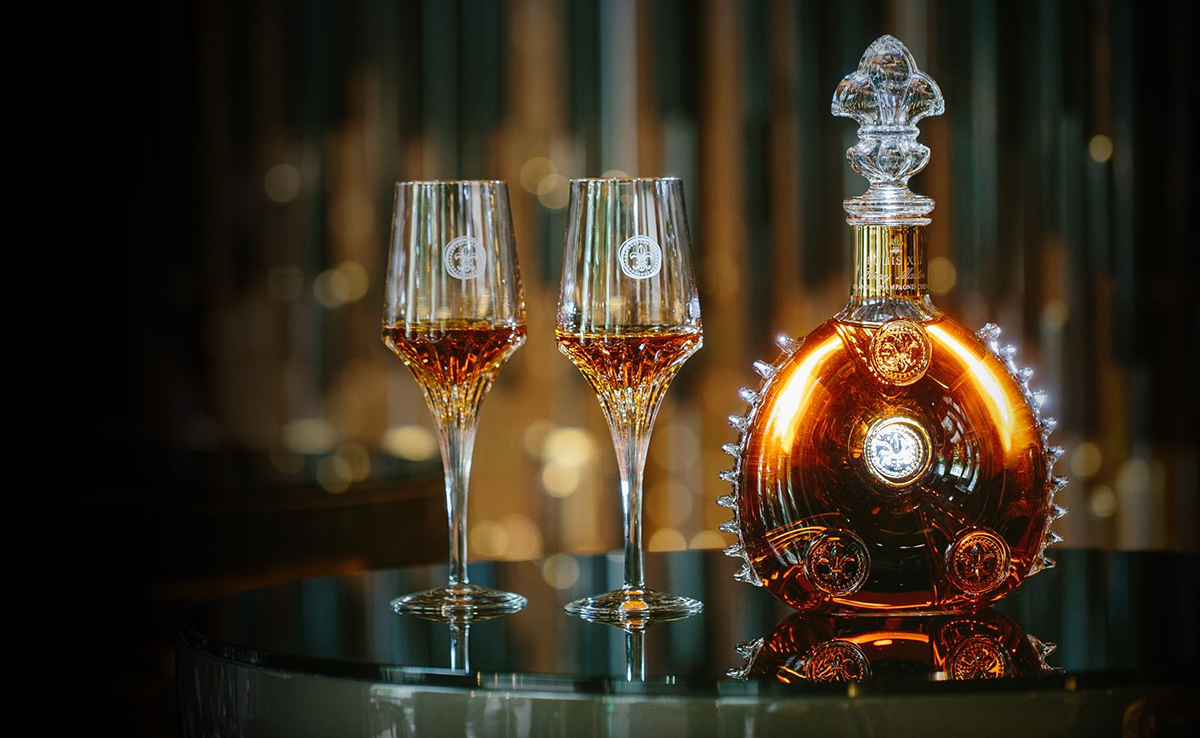 To be honest, where I have always thought myself capable of spending a few thousand dollars for a bottle of wine, Château Margaux 2000 comes instantly to mind, I’ve never felt the same inclination for a high-end Cognac. I have enjoyed fine Cognacs and Armagnacs throughout the years, but the appreciation never topped a few hundred dollars. At the end of a recent wine dinner, the restaurant owner though by sheer generosity or sufficient wine was kind enough to portion out small glasses of Remi Martin’s Louis XIII cognac. The delicate though decidedly complex spirit, was different from what I expected and I decided to learn a bit more.
To be honest, where I have always thought myself capable of spending a few thousand dollars for a bottle of wine, Château Margaux 2000 comes instantly to mind, I’ve never felt the same inclination for a high-end Cognac. I have enjoyed fine Cognacs and Armagnacs throughout the years, but the appreciation never topped a few hundred dollars. At the end of a recent wine dinner, the restaurant owner though by sheer generosity or sufficient wine was kind enough to portion out small glasses of Remi Martin’s Louis XIII cognac. The delicate though decidedly complex spirit, was different from what I expected and I decided to learn a bit more.
It turns out that what we were drinking was a blend of over twelve hundred separate ‘eau-de-vie’ created and meticulously stored by Remy Martin, some of which had been aged in limousine oak barrels for as much as hundred years. The beautiful liquid in our glasses had started production at around the start of World War I.
The term eau-de-vie, literally ‘water-of-life,’ I most often associate with fruit brandy (eau-de-vie de fruit), think pear and Poire Williams; however, eau-de-vie (de Vin) is essentially brandy made from distilled grape wine.
The most commonly grown white grape in France is ugni blanc, and if it comes from the six regions immediately surrounding the city of Cognac in southwest France, then the brandy produced becomes the specific and legally designated spirit known as Cognac.
I was surprised to find out that there is more than one area called “Champagne” in France. A small sub-region in Cognac called “Grand Champagne” is the source of the finest ugni blanc grapes and is used exclusively for Louis XIII.
I was familiar with brandy designations and knew that by French law, V.S. (Very Special) designates the youngest brandies, those that have been stored for at least two years. V.S.O.P. (Very Superior Old Pale) or Reserve brandies are stored for at least four years. Further up the scale, XO (Extra Old) or Napoléon brandies are currently required to be stored for at least ten years.
Hors d’âge (Beyond Age), a new designation to me, are those spirits that have been stored from between 40 and 100 years. At this designation, our glasses contained virtually the pinnacle of spirits in terms of age, rarity and ostensibly quality.
Remi Martin is one of the largest producers of cognac in France and creates products of various grades; Louis XIII (created in 1874) is their prestige brand and is recognized by their signature Baccarat crystal bottle, and it’s stratospheric price tag. To be fair, only about one hundred bottles are released each year.
I recently went back to the restaurant to try the Louis XIII without the prelude of five Italian wines.
Served in a tall stemmed glass, again designed for Remi Martin, the brandy was a beautiful deep amber color with glints of gold from the faceted glass. The nose changed a few times from pour to finish. Initially, sweet, smoky, wood and spice (cinnamon) aromas accompanied the prominent alcohol essence. Eventually, as the brandy opened up, sweet floral notes, marzipan, nuttiness and finally a warm caramel custard scent filled the glass.
On the palate, the first reaction is strong but very smooth alcohol, a faint sting but with a surprising freshness considering the age of the spirit involved. The woody spice and almonds notes from the nose carry through to the taste but evolve with fruit notes. I could identify distinct grape and fresh plum-like flavors.
The finish is very long and carries the woody, smoky qualities from the nose.
Throughout the tasting, I tried to keep in mind that the beautiful complexity of the brandy was the work not only one master distiller but in actuality, generations of workers, most of whom would never know the finished product. The knowledge of that dedication certainly added to the unique experience.
The ability to drink history does come with a price, the 750ml bottle sells north of $3,300, but for a special occasion, in a fine restaurant bar, it can be had for around $250 an ounce.
As I finished the glass, I was certain that with a larger sample even more complexity and enjoyment would be in store. The Château Margaux may have to wait in line.
By Richard Arebalo
OTL Features Editor